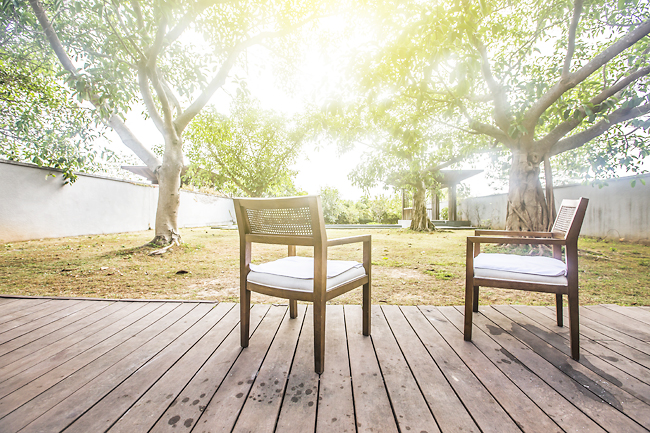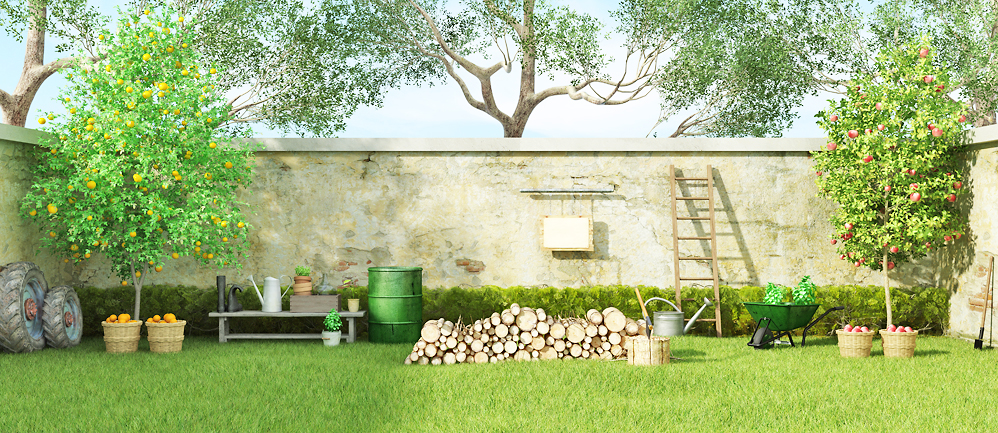Marissa Hermanson
THE WASHINGTON POST – Longer days and warmer weather have us thinking about heading outside, whether it’s for entertaining family and friends or simply relaxing and getting lost in our thoughts.
Instagram is also full of images of enviable outdoor living spaces worthy of imitating. But what if you don’t know a fern from a fig tree?
If you want a nice backyard but feel intimidated by the idea of spending a lot of time, money and energy to get it, take heart. Even people who aren’t good with plants and landscaping can have an outdoor space that’s fit for entertaining.
There are two main elements to creating a comfortable, low-maintenance yard: durable hardscaping that will stand up to the elements, and plants that don’t require much watering, pruning or skill to keep them looking good.
Without getting too in the weeds, here’s some basic guidance for designing an outdoor area that doesn’t require much upkeep – or money.


AFFORDABLE HARDSCAPING
The first step is to establish the area where you’ll be doing your outdoor living.
“Figure out how you want to use your outdoor space,” said owner and landscape designer at Hawthorne Garden Design, in Washington, DC Tamara Belt. “Are you sitting and having drinks? Is it a place where you cook and eat? Do you want a firepit? How many ‘rooms’ do you want?”
For city dwellers with a small backyard, a centred patio surrounded by a plant border is a classic layout. Suburban homeowners with a larger yard should think about zones: where to entertain, where to relax, where to have a grassy area for children. In this scenario, a patio off to the side will make the yard look bigger and give children more space to play.
Mulch is one of the most affordable hardscaping materials. For a simple outdoor gathering area, Belt recommends having a small firepit with a circular mulch pad surrounded by a stone perimeter to help delineate the space.
You can also DIY a patio with budget-friendly materials such as concrete pavers and pea gravel.
Lay heavy-duty landscaping fabric before you put down pea gravel to prevent the tiny stones from sinking into the mud.
Then nestle steppingstones among the rocks. If loose pebbles are a concern, an adhesive can be applied to keep them from scattering. Poured concrete pavers cut in shapes that mimic real stone are less expensive than natural materials such as Pennsylvania flagstone.
A more permanent option is a stone patio set in sand rather than wet concrete. It’s more expensive than pavers, pea gravel or a mulch pad, but it will stand the test of time.
“It flexes with the ground, and you can repair it,” said a landscape designer and horticulturist with Meadows Farms, in the Washington, DC area Hugh Perry. Materials can include masonry, such as brick, flagstone, travertine or granite, and even porcelain tile.
While planning, consider how hardscaping will hold up year-round with precipitation.
“Think about what it’s like when you have to shovel or there is ice,” Belt said. “A gravel pathway is great, but after a big snow, you can’t shovel that.”
PLANTS FOR ALL SEASONS
Once your hardscaping is in place, look for low-maintenance plants that don’t need much pruning and that do well with the temperatures and rainfall of your area.
Before buying, research plant size, as well as the rate and direction the plant will grow as it matures, to understand how much upkeep it requires. “You want to think about how this thing is moving through time,” said Perry, who recommends selecting plants that need to be trimmed once a year.
Remember that, in this case, it’s best to keep everything fairly simple and to focus on a few types of plantings. With more plant variety comes more work.
“When people get into plants, they are a kid in a candy store,” Perry said. “They are buying too many varieties, and then they are just collecting plants.”
A large cluster of one type of plant will grow together and help suppress weeds. This also creates a more dramatic look. “You get the cherry blossom effect,” Perry said. “It’s high-impact.” This less-is-more approach is the foundation for a well-composed garden.
To keep your yard looking good year-round, plan for any seasonal changes. Belt recommends dividing your plantings, so one-quarter will be in their prime each season. For example, a small yard with 12 plants would have three plants each dedicated to spring, summer, fall and winter.
Around one-third of plantings should be structural plants, such as evergreens, Belt said.
“These are the bones of the garden that will be present year-round and give it shape.”
From there, you can layer plants with varying heights and textures for contrast.
“Otherwise, you may end up with a bunch of plants lined up like books,” she said.
Flowers are only present for a short time, so don’t be wooed by big blooms at the nursery.
Instead, take note of a plant’s shape and foliage. Warm and hot-weather plants may have great blossoms and fragrance, but for colder months it’s best to focus on colourful leaves, sculptural stems and berries.
As you plan, be aware of the differences between native, nonnative and invasive species. When it comes to plants, a certain amount of aggressiveness is good, because this keeps the weeds at bay.







